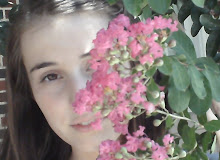
There are certain steps of creativity that experts have decided always take place that are called the creative process. The creative process is the order of events that take place when something creative is being created.
First, is the Preparation Stage. This is where all the planning happens. This is to make sure that there won't be any "technical difficulties" while the creative product is being made. Even though this takes place on the "Hard-Thinking" side of the diagram, brainstorming occurs during the Preparation Stage, which is "Soft-Thinking." Brainstorming is used here to come up with as many ideas as possible so that the Incubation Stage will have a lot to work with. In our creativity video for this stage, we planned out in class what we wanted to happen in our movie, what parts we had to cast, who would play them, who would write the scripts, what jobs people would have, and so on.
After the brainstorming and the Preparation Stage, comes the Incubation Stage. There, the mind just wanders and contemplates unconsciously the ideas it came up with during the Preperation Stage. This is where dreams come in because a lot of the time, people can get their ideas in a dream. While the mind just "incubates" and processes all of the ideas and sees what else it can come up with, we are reading, watching a movie, sleeping, sitting in class, daydreaming, anything. This is the beauty of the Incubation Stage. It doens't take lots of effort, which is why it is considered on the "Soft-Thinking" side of the Creative Process diagram. So for this part of the creative process, everyone in class just did their own thing and came up with their own ideas.
The Aha! Moment comes during the Incubation Stage but is a whole other thing entirely. This is when the stroke of brilliance comes and you get an amazing, creative, wonderful idea to solve your problem. Because the mind has been working on the creative problem the whole time, the Aha! Moment can occur anywhere, any place, and any time. During the video's creative process, this happened at different times for different people. For some they had an Aha! Moment while we were in class, still discussing, but for some people it happened when they were fast asleep and then they woke up because of that idea.
After you get your idea, you have to test it in the Verification Stage. There, you double check if your idea will work by actually putting it into play. You start building, and see if there are any problems. If your great idea was a new math theory, you would test it out during the Verification Stage to see if it really did work. For us, the Verification Stage was when we created the video. If there were any problems that we didn't foresee, they had to be dealt with then. All creative ideas were added, and or edited into the video at this stage.
Because the Creative Process is flexible, these steps don’t' always necessarily go in this order. Sometimes after the Verification Stage you have to go back to the Preparation Stage, or the Incubation Stage, or even the Aha! Moment. These can be mixed around into almost any arrangement.
The video: (because of illnesses, the video isn't done yet, but if it ever is I will probably link it here)
Image:
http://jhubler.schoolwires.com/115710718163526213/lib/115710718163526213/paint-splatter.jpg


